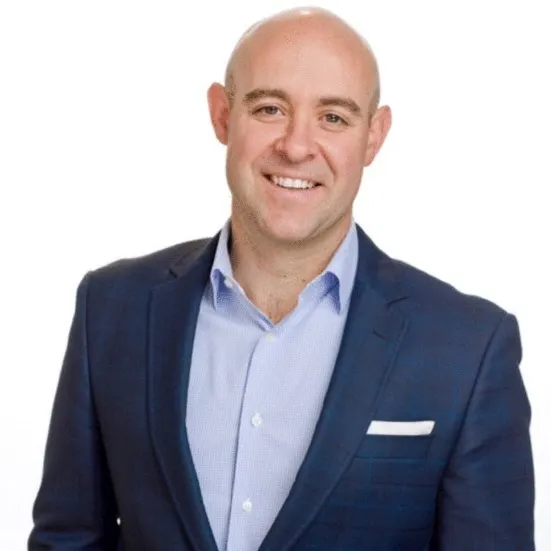When Chris Greiner stepped away from the CFO role to lead product, operations and sales at a healthcare analytics company, he didn’t expect it would completely reshape how he viewed finance. But carrying a bag, managing a go-to-market strategy and reporting to shareholders from the front lines gave him a new perspective of the real job of a CFO. He now has a perspective that a CFO’s job is about enabling value creation, not inspecting it.
Now back in the CFO seat at Zeta Global, Greiner brings that experience to bear in how he allocates capital, builds forecasting systems and communicates with investors. He says communication was one of the biggest challenges he had to overcome early in his career. From faking laryngitis in school to avoid speaking in front of the class to now addressing stakeholders, earnings calls and public events regularly, it’s one of many hurdles he’s worked to overcome.

Chris Greiner
CFO, Zeta
First CFO Position: 2010
Noteable previous employers:
- LivePerson
- Inovalon
- IBM
This interview has been edited for brevity and clarity.
ADAM ZAKI: You have a lot of experience working in different functions as a CFO. What is your take on how the role has evolved over time?
CHRIS GREINER: I probably have a different perspective than what most would say. The canned answer you’d usually hear is going from a seat at the table to one at the head, helping make strategic decisions and that’s fine and probably true. But the fact of the matter is, what I learned most about being an effective CFO, and what completely changed my lens on what a CFO is, happened when I actually wasn’t a CFO.
I stepped outside the role for about three to four years, during which I took a company public. Not as CFO, but as chief product officer, COO and head of sales. Effectively, I was the general manager of the company. During that time, what I thought I knew about the job evolved. What I learned in the job was that value is added for customers by creating the world’s best products, and value is added for shareholders by having the best go-to-market strategy to sell those products efficiently. I was responsible for both.
This was at a healthcare data analytics company, where outcomes mattered. The product had heavy regulatory oversight and we sold it into the traditional health plan world mostly in the provider space. What I realized in that role was I wasn’t getting the resources I needed. I was being inspected, not enabled, as a business driver.
That experience changed my perspective on the CFO role. It made me recognize that CFOs need to step outside their function and realize their function isn’t all that important. I say that a little tongue in cheek. But, the real importance in a business lies in whether you’re devoting and getting resources as fast as possible to build great products.
In this changing world, the CFO should be asking: how can I automate more of what I do? How can I be more predictive and analytical? That’s all great. But for me, the changing role of the CFO is recognizing where value is created and getting resources there as fast as possible. I’m always making sure quality always takes precedence over speed.
So that’s maybe a bit of a different answer, but it came from actually having to deliver code, sell it, carry a bag every day and answer to shareholders.
The “martech” space is growing tremendously. How does the company plan on staying competitive?
I’ll give you an even better term, because something an investor once said to me really stuck. He called it “mad tech.” That’s marketing and advertising technology coming together, which is really what we do. Frankly, we’re that bridge between the two.
It all goes back to resource allocation. Every day when I wake up, I’m trying to figure out strategically: where am I devoting capital, where does the company need it, what’s the return on that capital and what are the right measurements to make sure what we’ve invested in is generating returns on the timelines we expected.
For us, that means having a very dynamic approach. We actually [run an internal exercise where we] reforecast our business every day. Not just every week, month, or quarter. It’s an everyday reforecast. That constant updating is based on what’s right in front of us, but we keep the long-term horizon in mind. We’ve established a multi-year model that, in our case, we’ve shared with the street.
So what we’re delivering today, tomorrow and the rest of the week is very much connected to what it means for the rest of the year and for the Zeta 2028 model. We’re constantly reallocating resources and investments based on which goals are being met, so we can assess whether we’re getting the returns and outcomes we expected.
At the end of the day, my job is the deployment of capital, making sure it gets where it needs to go, on time.
How has your approach to risk management and cybersecurity developed over the past two years?
It’s a line item on the budget that never gets questioned. Every year it’s, “Are you sure you don’t need more?”—whether that’s for cybersecurity or data governance.
We’ve worked hard to create a single source of truth across the company. That’s not unique, but we’ve gone further. If a business unit leader quotes revenue or pipeline metrics, they’re pointing back to the central ledger or forecasting system, that’s standard. What we’ve done is bring in more: sales pipeline data and a unique asset called the Zeta Economic Index (ZEI).
We started publishing the ZEI a few months ago. It uses real-time data from the open web. We’ve turned it into a public-facing tool that tracks the US economy, industry by industry and consumer sentiment.
That data plugs into our system so that at the very top of our funnel, we’re looking at macro trends in real time. Since 96% of our revenue is US-based, we focus on the US. Then we track how those trends are showing up in our pipeline. Whether we’re seeing weakness in sectors like travel or retail, how that affects what our sales team generates and what we reforecast.
For us, data governance isn’t just a security wrapper, it’s how the data is used. And in our case, it’s how we maintain accuracy in our models. We’ve been public for 14 quarters, and in all 14, we’ve beaten and raised guidance.
Is there an area of the company where you want to implement more technology this year?
Sales operations, because it’s part of my function in finance and it feeds directly into how we forecast revenue. The upside of automation tools that can helps us improve our accuracy is huge for us.
Right now, we’re at the very early stages. What we often say when it comes to generative AI is that we’re earlier than we think, but farther along than we realize. For us, that means we’ve started capturing all the tasks performed by everyone in my organization.
I believe that if you follow the tasks, patterns will emerge: common tasks, redundant tasks and outliers we maybe shouldn’t be doing at all. That insight becomes a proxy for how we’re spending our time, like time tracking for accountants or attorneys. We’re starting that journey so we can map out automations for anything that repeats in accounting, finance and sales operations.
Ultimately, I think that leads to a leaner finance organization and ideally, a more interesting one too. You eliminate the redundant, menial work, automate where you can and start turning financial analysts, accountants and sales ops people into more data-driven thinkers, not just taskmasters.
What advice would you give to CFOs who are looking to be more articulate and better communicators on earnings calls and/or in meetings with stakeholders?
It’s funny. A bit of backstory — ever since I can remember, reading out loud terrified me. In school, I’d fake laryngitis if I knew I’d have to read a paragraph aloud that week. That was my first form of forecasting, figuring out when it’d be my turn, so I could avoid it. I stuttered badly and it was something I carried with me into adulthood.
Fast forward to my first public earnings call. It was live, not pre-recorded, which added to the stress. I remember saying a quick prayer, thinking, “Please, not now.” Public speaking was never easy for me, so it’s a very real thing and hopefully it’s a different take on what it’s like to prepare for those moments.
I was lucky, though. I spent my first 12–13 years at IBM, with incredible mentors, three of whom went on to become CFOs of the company. One of my most meaningful roles there was overseeing all of IBM’s forecasting, measurements and reporting. It was a risk control role and few people had that end-to-end view of the business.
I’d sit in the room as the CFO prepared for earnings calls, working alongside a great head of investor relations. I learned how important it was not just to report the numbers, but to connect them. It was about turning the reporting of news into making the news.
Later, I married my wife, a chief marketing officer at the time, now a CEO and she pushed me to focus more on storytelling. She helped me learn how to bring things to life with use cases and real narratives. That stuck with me. I try to blend it all: data, storytelling and listening. I poll people to see what they’re interested in. I don’t assume I know best. I’d advise others to listen to the sell side, the buy side and even competitors’ calls to learn what to emulate — or avoid.
It started with great experience, but also just being willing to admit I don’t always know what’s on everyone’s mind and making sure I capture as many perspectives as I can.





